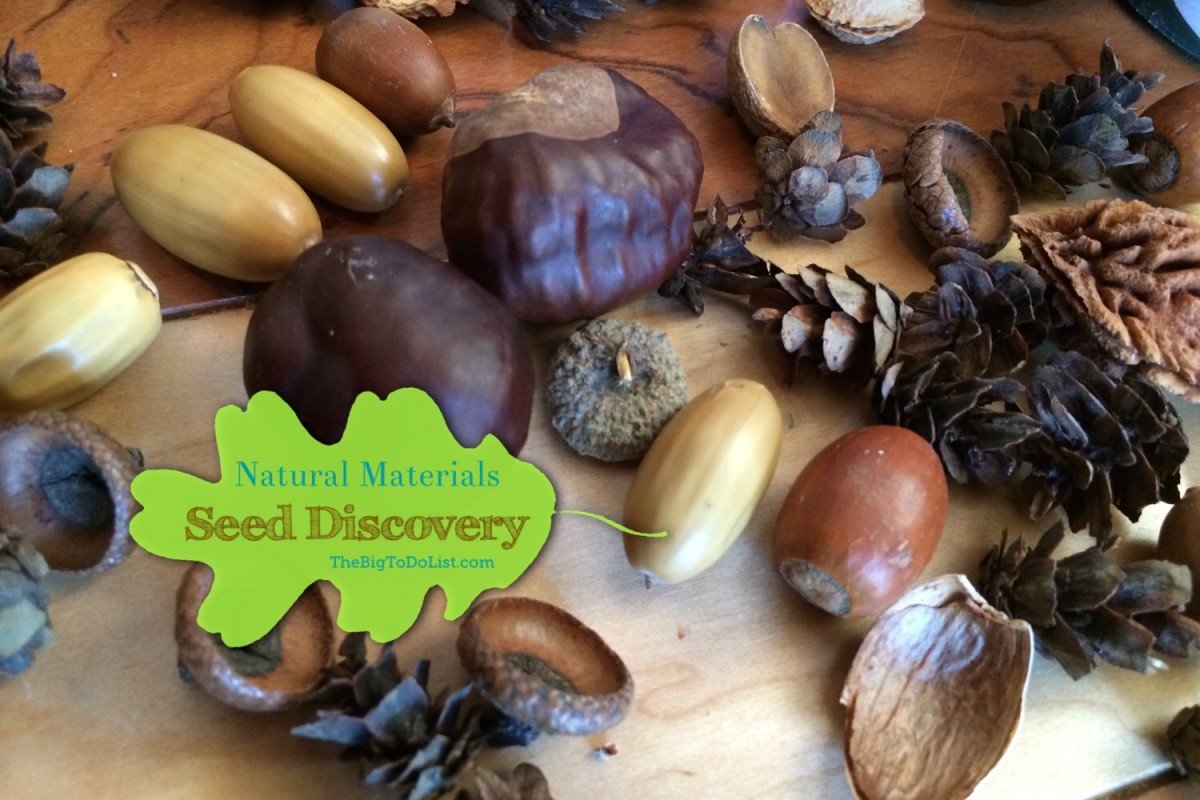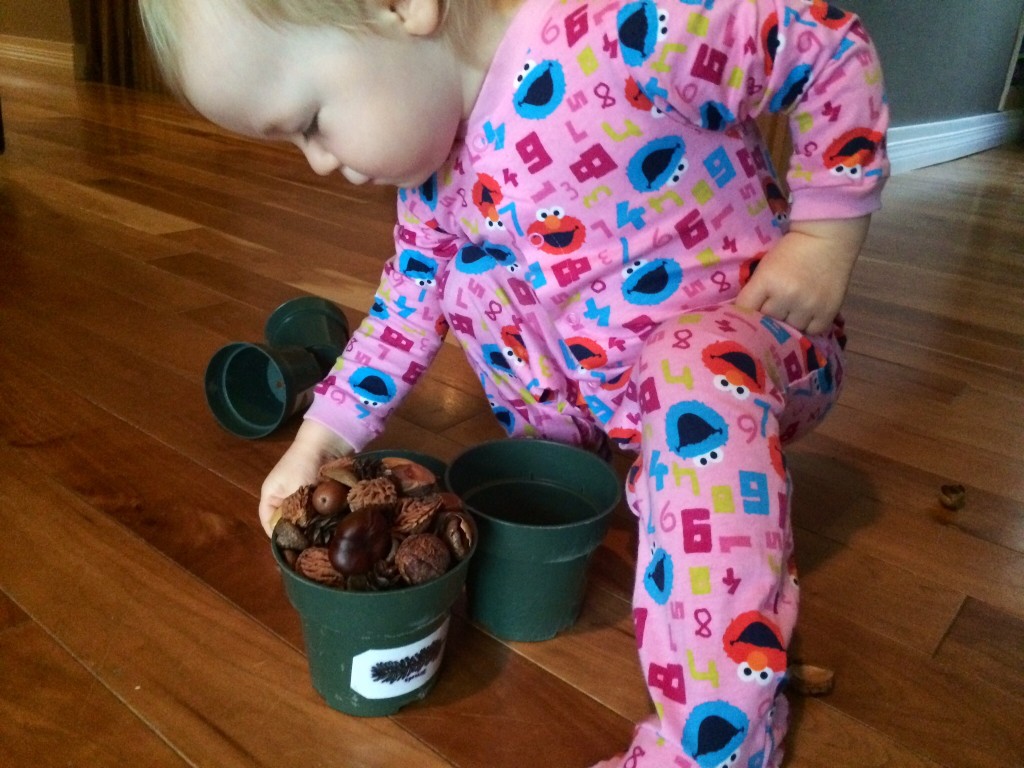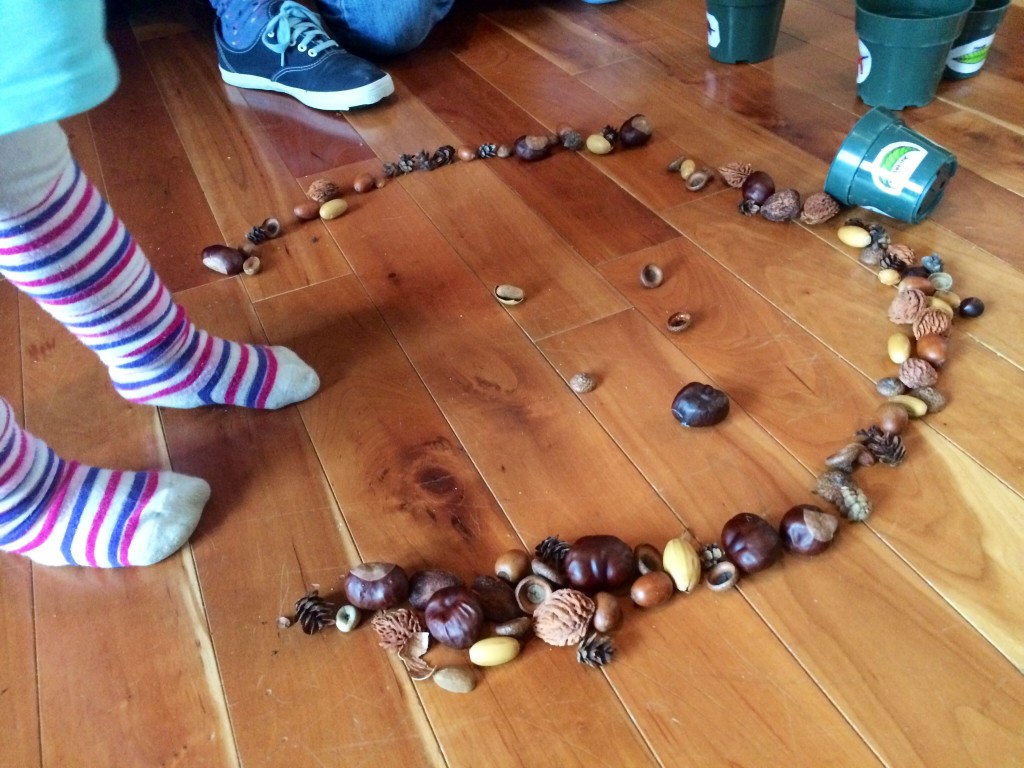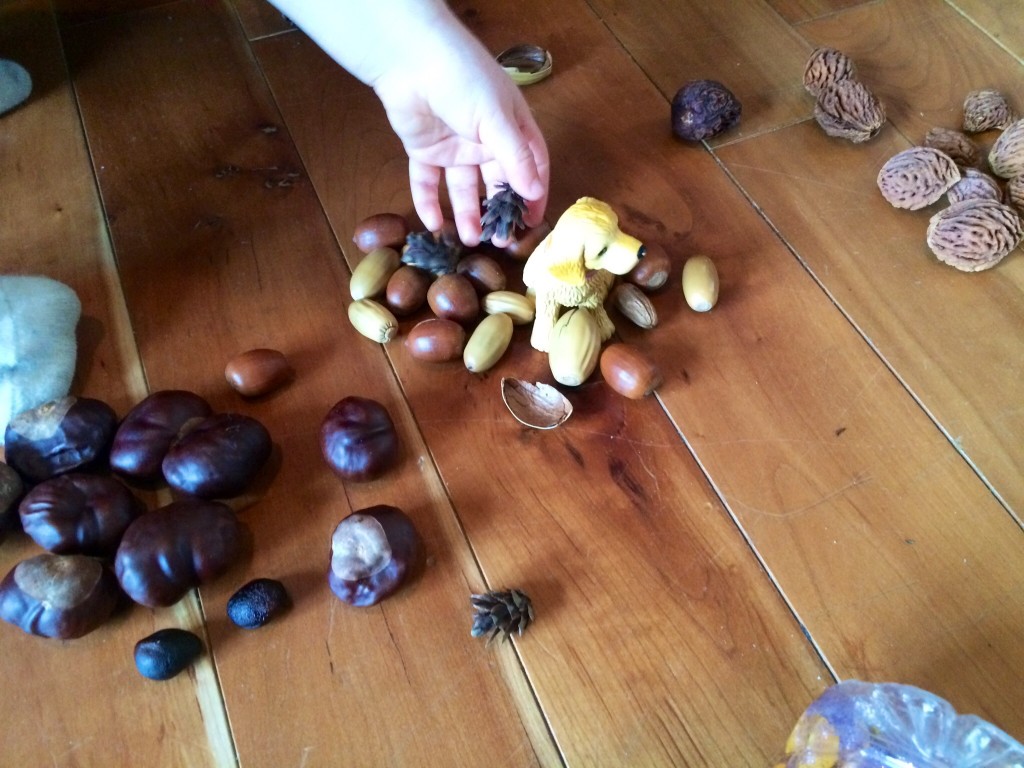
It’s no secret that little ones would rather play with your kitchen tools than their just-for-kids plastic toys. Face it: children are motivated to enjoy the experience of discovering real things that have value in the world around them, beyond the toy box. Items that tend to be especially intriguing are those that are found in the outdoors. Natural materials, like sticks, rocks and pine cones, seem to call to a meandering toddler to stop and investigate them, to find new and unconventional ways to use these natural materials to expand their understandings of themselves, their imaginations, physics – the great big world surrounding them. It’s such a simple way to experience science for kids.
These things are real. These things have purpose. These things are magical in their entering, contributing, and leaving the world. They are full of life.
Wrought with a dazzling variety of colours, textures, shapes and smells, the things we can gather from our parks, forests, beaches, and even our backyards have so much to offer in way of developing the mind, body and a child’s ever-growing thirst for understanding. Using natural materials provides many opportunities for learning through art and science for kids, and so much more. As an added bonus, they are available to us for free. Engaging learning and development with no purchase necessary? Yes, please!
Being the collecting (some might say hoarding) Early Childhood Educator that I am, in my (current disaster – future KonMari-ed craft and ECE masterpiece) “spare” room I keep an old, wicker luggage case full of various open-ended items to be explored. Last week, spending some time at the house with her visiting Grandpa, Little Miss Ziggity came across this treasure-chest of mom-why-have-you-been-hiding-these materials and was eager to extract and explore my Tree-Seed collection.
Beginning this collection of seeds, nuts and pinecones (which are all seeds, really) during my Early Childhood Care and Education studies, I have since added to and enjoyed using it to offer up provocations for interaction and discovery with my preschool classes. The collection includes acorns, chestnuts, tiny pinecones, avocado pits, nectarine and peach pits, along with some small plant pots with images drawn by me of the leaves of the different trees where each of the seeds came from. There also used to be plum and mango pits, but they have since met their demise.
It’s been amazing to watch how many thoroughly engaging and different ways children can use these open-ended gifts from nature, and to be a part of the teaching moments that came from setting out these materials to be explored by curious and creative youngsters.
Breaking these fabulous treasures out to be explored by my toddler, we began enjoying many of the above-mentioned ways of interacting with this collection.



I’m thrilled about all the enjoyment, engagement and opportunity for discovery that these natural materials provided my little one (and myself). I’m eager to start building more collections of open-ended and natural items for future explorations. Perhaps rocks will be next on the agenda – Little Miss is always interested in picking up and studying these hardy little pebbles. [Edit: For more about Loose Parts Theory for open-ended play, read this post.]
How do you offer learning about science for kids? Do you enjoy using natural materials with your young ones? What kinds of collections have you made and discovered? I’d love it if you shared some ideas in the comments below, on Instagram (tag me @hanspray ), on The Big To-Do List Facebook page, or over Twitter by tweeting me at @TheBigToDoList .
If you liked what you found here, why not sign up here for a quick and simple weekly email that let’s you know what’s new here – Giveaways, early learning, parenting vents and/or tips, healthy eating ideas, crafty projects, and whatever else I think you’ll find valuable.
One thought on “Natural Materials Seed Discovery – Toddler Tuesday – Science for Kids”
Pingback: Loose Parts in Early Learning - ECEBC Conference Takeaway